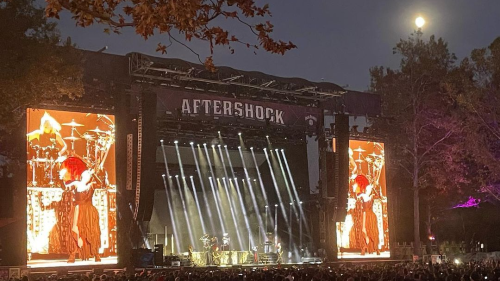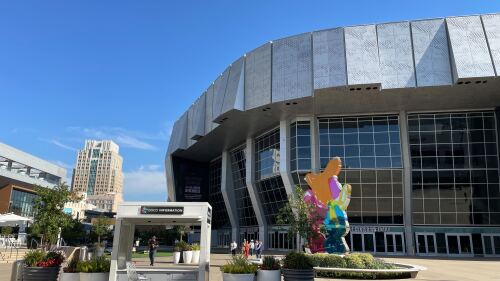City Editor Matt here — Capitol Park is a beautiful, complex place full of political importance, stunning architecture, beautiful trees, and several opportunities to engage in thought-provoking history, like the Memorial Grove which is populated with seeds taken from Civil War battlefields.
Yet, there’s something else that truly fascinates me about the park: Whenever I go visit, it’s teeming with wild animals. In fact, I still remember my first time walking through the park — I encountered a raccoon + her four kits, a waddling skunk minding its own business, and something else I believe to have been an owl.
While this may not be so remarkable — it’s a 40-acre park that breaks up downtown’s urban streets and our area is known for roving rafters of turkeys — there’s something joyous about our political center sustaining a healthy ecosystem that is home to several surprising critters.
Let’s start with one that’s easy to spot on evening walks — the common raccoon. Not only is the nocturnal mammal well adapted to urban life, one was actually kept as a pet by President Calvin Coolidge, wandering freely in the White House (which I like to think makes the species well adapted to Capitol Park).
Often seen as a nuisance, raccoons can play the important role of spreading seeds + controlling pests, like wasps. However, if you see one, be sure to keep a safe distance because they can become aggressive if provoked.
If you walk in the park during the day + pause beneath an oak tree, you might be greeted by the thudding sounds of a Nuttall’s woodpecker.
This strikingly-plumed bird — which can be easily identified by the red crest + inverted zebra-like marks on its back —has a limited habitat range from Baja to Northern California, yet serves a pivotal role in the ecosystem as homemakers. Their carved-out nests in trees are often used by other birds that are incapable of making cavities themselves.
If you find yourself under a valley oak, which can be easily noted by its “earlobe” like leaves, you’ll likely spot these orbs that look like rotten apples. Those are called “galls” + are the incubators for the California gall wasp larvae. It may be gross, but these “false fruits” are high in tannins, which can be used for dyeing and were used by Native Americans in coloring natural fibers.
Yet these three barely scratch the surface — according to iNaturalist, park goers have observed 63 different animals, including a desert cottontail rabbit + a West Coast lady butterfly.
For me, the fact that there are so many critters that call Capitol Park home is a fascinating juxtaposition of the civilized world we uphold + the natural world we exist in. It also brings home the vibrancy of Downtown Sacramento for me, and speaks to that special charm of our city — one where you may have to wait 10 minutes in your car to let the turkeys cross the street.














